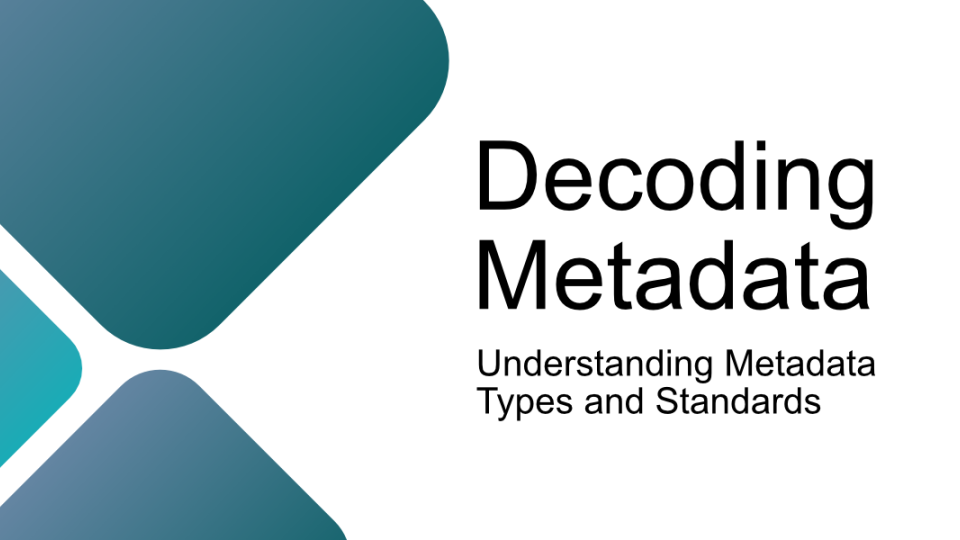In the world of academic research, the dissemination of knowledge and collaboration among scholars are fundamental drivers of progress. While traditional peer-reviewed journals have been the conventional method for sharing research findings, they often entail lengthy publication timelines and restricted access. In contrast, the preprint servers are instrumental in advancing scientific communication and rapid dissemination of research findings. However, they also come with quality, credibility, and ethical concerns. As preprints continue to play a growing role in the research ecosystem, it is crucial for researchers, institutions, and the scientific community to navigate these challenges and strike a balance between the benefits and risks of preprints in the dissemination of knowledge. In the continuation of our previous article, this one is dedicated to a few frequently used preprint servers. It is evident that the greatest advantage of all these preprints is that they are open access, meaning that the papers and articles are freely available to everyone. However, that is not all. The aim of this article is not to evaluate these preprint servers, but rather to give an overview of each.
ArXiv
ArXiv (pronounced "archive") is a preprint server and open access repository for academic research papers. It allows researchers from various fields, including physics, mathematics, computer science, and many others, to share their work with the global scientific community before it undergoes formal peer review and is published in a scientific journal. ArXiv serves as a platform for rapid dissemination of research findings and encourages collaboration and feedback from other researchers. Currently, it has more than 0.2 million scholarly articles for open access.
ArXiv was conceived in 1991 by physicist Paul Ginsparg as a revolutionary experiment in scientific communication and dissemination. Its primary goal was to accelerate the sharing of research findings by providing a platform where researchers could post their papers before formal peer review and publication. This idea was groundbreaking and aligned with the principles of open access, which emphasize the free distribution of scholarly content to the global community.
While allowing researchers to share their work at an early stage, ArXiv offers several other significant advantages:
- Rapid Dissemination: ArXiv enables the swift sharing of research findings. In the age of digital technology, scholars can upload their work and make it accessible to the entire scientific community within hours.
- Multiple Categories: ArXiv covers a wide range of scientific disciplines, from physics to biology, computer science, mathematics, finance, and more. Papers are categorized into specific subject areas to make it easier for researchers to find relevant content.
- Submission and Moderation: Researchers can submit their papers to ArXiv after creating an account. While there is a moderation process to ensure that submissions are relevant and appropriate, it is not a traditional peer-review platform. The responsibility for evaluating the research's quality remains with the readers.
- Collaboration and Feedback: It allows researchers to share their work quickly, get feedback, and collaborate with others in their field. This can help improve the quality of research before formal publication.
- Citations: Many researchers cite ArXiv preprints in their work, allowing others to reference and build upon ongoing research. Several research papers published on ArXiv across different fields of research can be found here.
Version Control: Allows authors to update their preprints with new versions, reflecting changes or improvements to their research. This feature enables a dynamic and iterative sharing of research findings. - Impact on Publishing: While ArXiv doesn't replace traditional peer-reviewed journals, it has had a significant impact on the way research is shared and disseminated. Many published papers on ArXiv eventually find their way into peer-reviewed journals.
In conclusion, ArXiv has transformed the landscape of academic publishing and scientific communication. It democratizes access to research, accelerates the dissemination of knowledge, and fosters collaboration among researchers. While it does not replace traditional peer-reviewed journals, it complements them, highlighting the power of open access and the importance of rapid information exchange in the pursuit of scientific discovery. ArXiv serves as a shining example of how technology can reshape the way we share and advance knowledge, making the future of academic research even more promising and collaborative.
SSRN
SSRN, short for the Social Science Research Network, was founded in 1994 by Michael C. Jensen and Wayne Marr with the vision of transforming the way research is communicated in the social sciences. It functions as a platform for scholars, researchers, and academics to share their research papers and working papers with the global academic community. SSRN has made a significant impact on how research in the social sciences is disseminated, and it has a broad reach across multiple disciplines. It was bought by Elsevier from the Social Science Electronic Publishing Inc. in May 20161 and currently provides more than 1.3 million research papers from over 1.5 million researchers across 70 disciplines.
One of the key strengths of SSRN is its ability to rapidly disseminate research findings. Researchers can upload their working papers, research articles, and other scholarly work, making them immediately accessible to scholars and the interested public. This feature eliminates the often lengthy delays associated with traditional publishing, ensuring that the latest research is available for exploration. Other than this, SSRN offers several other advantages as listed below:
- Research Paper Categories: It organizes research papers into categories to facilitate easy navigation and discovery. These categories cover various sub-disciplines within the social sciences, such as economics, law, business, humanities, and other related fields, ensuring that researchers can find papers relevant to their interests.
- Results by ranking: SSRN separates the top 10,000 papers based on their rankings derived from measures such as downloads and citations, alongside top authors, and top organizations, and provides open access to those.
- Engaging with the Global Academic Community: SSRN connects researchers from around the world. Academics and scholars can browse through papers, access the latest research, and interact with authors through the platform. This global engagement fosters cross-border collaboration and the exchange of ideas.
- Version Control and Updates: Authors can update their papers, allowing them to incorporate feedback, make revisions, and ensure that the most up-to-date information is available to the community. This dynamic approach to research sharing supports the ongoing development of ideas.
- Influence on Traditional Publishing: While SSRN doesn't replace traditional peer-reviewed journals, it has become an integral part of the scholarly communication ecosystem. Many researchers now use SSRN to showcase their work to a wider audience before pursuing formal publication, highlighting the platform's impact on the traditional publishing model.
To conclude, SSRN has carved out a significant niche in the world of academic research, particularly in the social sciences. Its dedication to open access, rapid dissemination, and collaboration has opened new avenues for researchers to connect, share, and advance their work. As we move further into the digital age, SSRN serves as a shining example of how technology can transform the sharing of knowledge, making research more inclusive, dynamic, and collaborative.
bioRxiv
bioRxiv, pronounced as "bio-archive," was founded in 2013 and is operated by Cold Spring Harbor Laboratory, a not-for-profit research and educational institution. It has become a crucial hub for researchers in the field of life sciences. It allows researchers in the field, including biology, biochemistry, genetics, and related disciplines, to share their research findings with the global scientific community before they undergo formal peer review and are published in scientific journals. BioRxiv serves as a platform for the rapid dissemination in the field of life sciences and encourages collaboration and feedback from other scientists.
Open access is at the core of bioRxiv's philosophy. Research papers hosted on the platform are freely available to anyone with internet access, removing financial barriers and promoting equity in accessing scientific knowledge. This approach also encourages global collaboration among scientists, fostering a diverse and inclusive research environment. Other than being an open access platform, bioRxiv offers several other advantages as listed below:
- Rapid Dissemination: The field of life sciences is one of the most dynamic fields and rapid dissemination of biomedical research is critical, particularly in cases of a pandemic such as during the advent of COVID-19. One of the primary purposes of BioRxiv is to enable the quick sharing of research findings. Researchers can upload their work to the platform, making it accessible to scholars, scientists, and the general public without the delays typically associated with traditional peer-reviewed publishing. This feature ensures that cutting-edge research is promptly available for exploration and engagement. According to research conducted by Nicholas Fraser et al., a cultural shift was witnessed in the use of bioRxiv and medRxiv preprints in disseminating pandemic results2.
- Collaboration and Feedback: BioRxiv encourages collaboration among researchers and facilitates the receipt of feedback from the scientific community. Researchers can engage with peers and receive constructive comments on their work, which can help improve the quality of research. This approach also encourages global collaboration among scientists, fostering a diverse and inclusive research environment.
- Research Categories: The platform categorizes research papers into various subject areas within the life sciences. These categories aid researchers in locating papers relevant to their areas of expertise, enhancing the discoverability of research across the vast spectrum of life science disciplines.
- Version Control: BioRxiv allows authors to update their preprints with new versions, reflecting changes or improvements to their research. This iterative process ensures that research remains dynamic and current, making bioRxiv a focal point for the latest developments in the life sciences.
Impact on Traditional Publishing: While bioRxiv does not supplant traditional peer-reviewed journals, it has profoundly influenced how life science research is disseminated. It serves as a means for researchers to showcase their work to a broader audience before pursuing formal publication, underscoring the platform's transformative impact on the traditional publishing model.
In a world where the swift sharing of research findings and equitable access to scientific knowledge are more critical than ever, bioRxiv stands as a testament to the power of open access, collaboration, and innovation in the life sciences. As technology continues to transform the research landscape, bioRxiv plays a pivotal role in shaping the future of life science research and ensuring that it remains at the forefront of scientific advancement.
MedRxiv
Founded in 2019, MedRxiv, pronounced as “med-archive”, has quickly established itself as a vital platform for researchers, clinicians, and scientists in the medical and health sciences. In the realm of medical research and the health sciences, the importance of rapidly disseminating knowledge and fostering innovation cannot be overstated. For years, traditional publishing pathways presented hurdles that slowed the progress of groundbreaking research. However, the emergence of MedRxiv has revolutionized the way research is shared in these fields. Owing to its significance, it's indexed by platforms such as Crossref, Google Scholar, and PubMed.
This section explores the advantages of MedRxiv, its role in the open access realm, and its contributions to the advancement of medical knowledge.
- Rapid Dissemination: MedRxiv's ability to swiftly disseminate research findings is one of its greatest strengths. Researchers can upload their work to the platform, making it accessible to their peers and the public without the usual delays associated with traditional publishing. This feature ensures that the latest medical research is available for exploration, analysis, and engagement. The importance of disseminating results in the field, and therefore, the demand of the preprints amplified with the emergence of COVID-19 pandemic. So far, over 28,500 articles on COVID-19 research are published on medRxiv.
- Collaboration and Feedback: MedRxiv encourages collaboration among researchers and experts in medicine and health sciences. It also facilitates the receipt of feedback from the scientific and medical communities, which can be valuable in improving the quality of research. In a rapidly evolving field like medical research, interdisciplinary collaboration is increasingly crucial. MedRxiv serves as an intersection for researchers from different medical domains, allowing them to effortlessly access and engage with research from related fields. This facilitates the exchange of innovative ideas and the collaborative development of new approaches and solutions.
- Diverse Research Categories: The platform categorizes research papers into various subject areas within medicine and health sciences. This categorization helps researchers find papers that are relevant to their specific areas of interest, whether it's clinical research, epidemiology, public health, or other related topics.
- Version Control and Continuous Improvement: MedRxiv allows authors to update their preprints with new versions, reflecting changes, updates, or additional findings. This feature supports the ongoing development of research findings and ensures that the latest information is available.
As technology continues to shape the future of research and medical science, MedRxiv has emerged as a pivotal resource for scientists, clinicians, and researchers. It embodies the spirit of open access, rapid knowledge dissemination, and inclusivity, all vital components of advancing medical knowledge and improving healthcare worldwide.
The future of preprint servers holds several exciting possibilities, driven by technological advancements, evolving scholarly communication practices, and a growing emphasis on open science. In our next article, we will focus on the future of preprint servers highlighting the trends that will shape their future.



